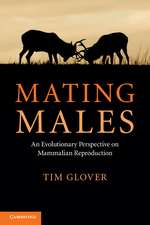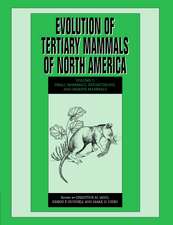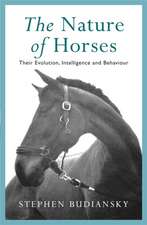Competition and Resource Partitioning in Temperate Ungulate Assemblies: Chapman & Hall Wildlife Ecology and Behaviour Series
Autor R.J. Putmanen Limba Engleză Paperback – 31 oct 1996
Preț: 633.68 lei
Preț vechi: 745.50 lei
-15% Nou
Puncte Express: 951
Preț estimativ în valută:
121.26€ • 126.86$ • 100.73£
121.26€ • 126.86$ • 100.73£
Carte tipărită la comandă
Livrare economică 02-16 aprilie
Preluare comenzi: 021 569.72.76
Specificații
ISBN-13: 9780412612404
ISBN-10: 0412612402
Pagini: 131
Ilustrații: XVII, 131 p.
Dimensiuni: 155 x 235 x 9 mm
Greutate: 0.23 kg
Ediția:Softcover reprint of the original 1st ed. 1996
Editura: SPRINGER NETHERLANDS
Colecția Springer
Seria Chapman & Hall Wildlife Ecology and Behaviour Series
Locul publicării:Dordrecht, Netherlands
ISBN-10: 0412612402
Pagini: 131
Ilustrații: XVII, 131 p.
Dimensiuni: 155 x 235 x 9 mm
Greutate: 0.23 kg
Ediția:Softcover reprint of the original 1st ed. 1996
Editura: SPRINGER NETHERLANDS
Colecția Springer
Seria Chapman & Hall Wildlife Ecology and Behaviour Series
Locul publicării:Dordrecht, Netherlands
Public țintă
ResearchCuprins
1 Introduction.- 1.1 Multispecies systems and the potential for interaction.- 1.2 Mechanisms of coexistence.- 1.3 The evidence for competition.- 1.4 Establishing competition in natural communities.- 2 The New Forest and its larger herbivores.- 2.1 The New Forest.- 2.2 The effects of grazing in the New Forest.- 2.3 Effects of grazing on the Forest fauna.- 2.4 The Forest’s large herbivores and their management.- 2.5 Current populations.- 2.6 Reprise.- 3 Ecology and behaviour of the Forest’s fallow deer.- 3.1 Introduction.- 3.2 Social organization.- 3.3 Patterns of habitat use.- 3.4 Diet.- 4 Behaviour and ecology of sika, red and roe.- 4.1 Behaviour and ecology of New Forest sika.- 4.2 Social organization.- 4.3 Habitat use.- 4.4 Diet.- 4.5 Red deer.- 4.6 Behaviour and ecology of the Forest roe deer.- 4.7 Diet.- 4.8 Patterns of habitat use.- 4.9 Roe deer habitat use and population performance.- 5 The domestic stock of the New Forest.- 5.1 The history of Common pasturage.- 5.2 Social organization and behaviour.- 5.3 Patterns of habitat use.- 5.4 Diet.- 5.5 Individual variation in patterns of resource use and cycles in body condition.- 5.6 Feeding behaviour of cattle and ponies: different strategies of exploitation.- 6 The potential for competition.- 6.1 Overlaps in resource use.- 6.2 Resource limitation.- 6.3 The potential for competition.- 6.4 Ecological interaction and population trend.- 7 Factors structuring resource relationships in ungulate assemblies.- 7.1 Interactions among New Forest herbivores.- 7.2 Does competition or predation structure ungulate assemblies?.- 7.3 The evidence for competitive interaction in natural ungulate assemblies.- References.
Recenzii
...a valuable summary - Journal of Animal Ecology.














